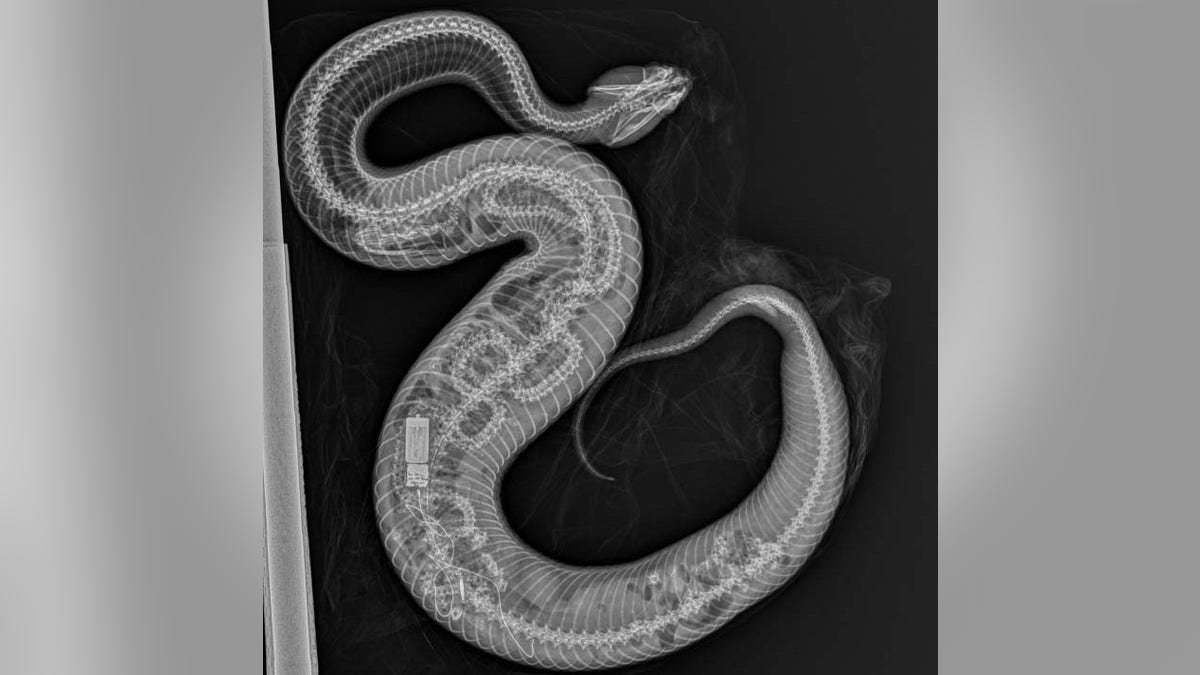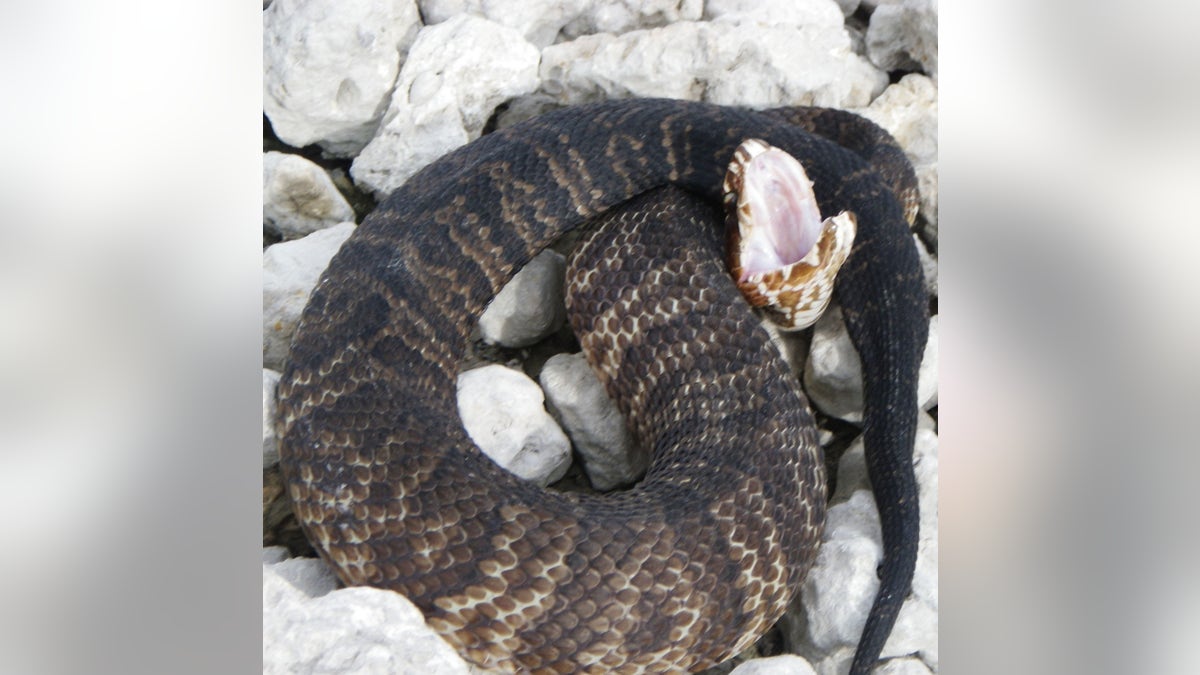Fox News Flash top headlines for August 23
Fox News Flash top headlines are here. Check out what's clicking on Foxnews.com.
A python with a tracker was eaten by a cottonmouth snake in Florida — and the slithery meal was caught on x-ray. The Miami Zoo posted a photo of the amazing x-ray on its Facebook account.
"You may have heard in the news about the bobcat that was documented stealing and consuming eggs from an invasive Burmese python in the Everglades," Miami Zoo captioned the post. "But, that isn't the only native species that is fighting back! A python that had its tracking transmitter implanted by surgeons at Zoo Miami was recently found to be consumed by another snake; a native cottonmouth, also known as a water moccasin. You can see the spine and the transmitter of the python inside the cottonmouth on this x-ray, or radiograph, that was taken at Zoo Miami's animal hospital."
The Miami Zoo said it was tracking the Burmese python, but were unable to find it until they made an unexpected discovery. The python with the tracker device was instead found in a slightly larger native cottonmouth snake.
TEXAS ALLIGATOR STUNS ON FACEBOOK WITH ITS STEALTHY, SLIPPERY MOVES

The x-ray image shows a 43-inch cottonmouth that ate a 39-inch Burmese python in the Florida Everglades. (Zoo Miami / Facebook)
SEAL BREAKS INTO NEW ZEALAND HOME, TRAUMATIZES FAMILY CAT
The x-ray image shows a 43-inch cottonmouth that ate a 39-inch Burmese python in the Florida Everglades.
The spine of the Burmese snake was consumed first, according to the x-ray, with the curving spine of the python stretched out inside the engorged cottonmouth. The image also shows the radio transmitter that was attached to the python when it was consumed.

Cottonmouth snake in the Florida Everglades. (Zoo Miami / Facebook)
Viewers on social media were stunned, with the post garnering over a thousand shares.
"Florida native species built different" one person commented.
CLICK HERE TO GET THE FOX NEWS APP
"Look at this craziness!" another said.
Some commenter wondered if the cottonmouth was able to pass the transmitter. According to one commenter, it did, and the transmitter was recovered a week later.























